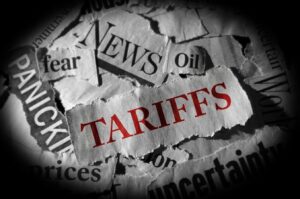Rana Hajirasouli is a Ph.D. Researcher at the University of Cambridge and Founder of The Surpluss (Certified B Corp).
The circular economy has long been heralded as an important pathway to sustainable economic growth and a shift away from wasteful linear models. Yet the world faced a decline in global circularity from 9.1% in 2018 to an all-time low of 7.2% in 2023. I believe these numbers reveal one thing: the circular economy’s reliance on perfect systems in an inherently imperfect world.
This suggests that the core issue is not a lack of awareness or technological capability but rather a failure by us as business leaders to integrate circularity into the core structures of our trade, finance and business strategies. However, based on my work in climate tech and waste reduction, I believe circularity can become a serious economic force if we make five critical shifts.
1. Frame circularity as a financial imperative rather than a moral one.
As long as waste remains an economic externality rather than a valued asset, businesses have little incentive to rethink production or disposal. I’ve observed that most industries still treat waste as a cost to minimize—not a resource to leverage. Unlike traditional commodities, circular opportunities remain largely unfinancialized.
But this is beginning to change. The EU’s Digital Product Passport (DPP) framework involves embedding lifecycle data—composition, origin, repairability, etc.—into products, making reuse and recycling more economically viable. This is expected to enforce accountability and secondary material adoption for sectors such as batteries, textiles, electronics and construction materials.
For business leaders, adopting circular models can unlock real-time market intelligence and operational efficiency. Here are a few ways you can begin making this mindset shift in your organization:
• Work with legal and compliance teams to identify current tariff disadvantages for inputs and explore how to pivot supply chains accordingly.
• Add a “circularity tag” to your existing procurement/inventory software that flags items as reusable, resaleable or at risk of waste. I’ve found that over time, these tags can enhance smarter buying decisions, mitigate the risk of overstock and reduce additional costs post-procurement.
• Partner with digital platform providers that track material flows and secondary market values. This can help you better understand asset resale trends in order to make more informed decisions. (Full Disclosure: My company offers these services, as do others.)
2. Move beyond recycling to radical design changes.
Recycling has long been positioned as the backbone of the circular economy. However, a 2022 report found that less than 10% of global plastic waste is actually recycled. Many recycling systems are inefficient, energy-intensive and often result in materials of lower economic value than their virgin counterparts. What’s more, upcoming product design regulations and “right to repair” laws could make planned obsolescence illegal within the next decade, reshaping the entire business model of consumer goods industries.
Instead of optimizing for recyclability, I believe we need to shift our focus to designing products for greater reuse, repairability and material regeneration. Circularity cannot function if products are still designed to break, degrade or be discarded. Consider adopting methods such as modular designs and high-value material recovery strategies.
3. Remove the data barrier.
I’ve found that a number of companies lack visibility into their own resource flows, leading to inefficient resource management. Without real-time data on materials, circularity often remains an afterthought rather than a core economic driver.
The rise of AI-driven material tracking, blockchain-backed resource passports, and industrial IoT solutions is beginning to change this dynamic. For instance, companies can simplify identification, valuation and market exchange by shifting toward algorithmic resource optimization through computer vision (CV). I also recommend appointing a Chief Circularity Officer (CCO) to oversee resource flows in real time and help ensure that materials are treated as strategic assets rather than waste byproducts.
4. Make circularity something consumers don’t have to think about.
Many circular initiatives depend on consumer participation, assuming people will opt for sustainable products, prioritize repair or engage in take-back schemes. However, I’ve found that convenience almost always wins over sustainability. Despite the growing awareness among consumers of climate and waste issues, circular products only make up about 8% of global consumption.
I believe that in order for circular systems to be successful, they need to function seamlessly, without requiring consumers to change their behaviors significantly. Consider how you can automate circularity in your organization, such as through embedded return systems, AI-driven product tracking and logistics frameworks that can help make waste an impossibility rather than a responsibility for consumers.
5. Align circularity with global trade and geopolitical strategy.
Circularity is often framed as a sustainability issue, but it is fundamentally tied to resource security and economic sovereignty. For example, China’s dominance in rare earth minerals, battery supply chains and electronics recycling gives it an outsized advantage in circular markets. The EU, meanwhile, is attempting to reduce dependence on foreign material imports, and the United States is investing heavily in circular-critical industries such as semiconductor recycling and domestic remanufacturing to compete in this space.
I believe that within the next decade, geopolitical competition could accelerate circular adoption faster than any sustainability mandates and even become a lever of national security as countries seek to secure access to critical materials. Here are a few ways that business leaders can act strategically on circular trade shifts:
• Engage in policy dialogues and regulatory outreach to ensure your sector is represented in circular trade frameworks. Participating in public-private discussions and building direct relationships with customs officials could also help prevent delays or misclassification of goods.
• Align your sourcing with circular-friendly regions. Favor suppliers in markets with clear policies on reused goods, digital product passports or carbon adjustments to reduce compliance friction and future-proof your internal trade strategies.
• Join or launch a local circular industry coalition. In my experience, collaborating with peers can be an effective path to influencing upcoming policy, ensuring your voice is heard and amplifying impact in your sector.
Make circularity the default, not the exception.
Circularity is a choice, often driven by corporate goodwill and fragmented policies. For it to reshape industries, it must be woven into our financial markets, trade agreements and automated supply chains. I believe that if we can make waste an economic inefficiency rather than an environmental concern, circularity will evolve from idealism to infrastructure.
Forbes Business Council is the foremost growth and networking organization for business owners and leaders. Do I qualify?
Read the full article here











